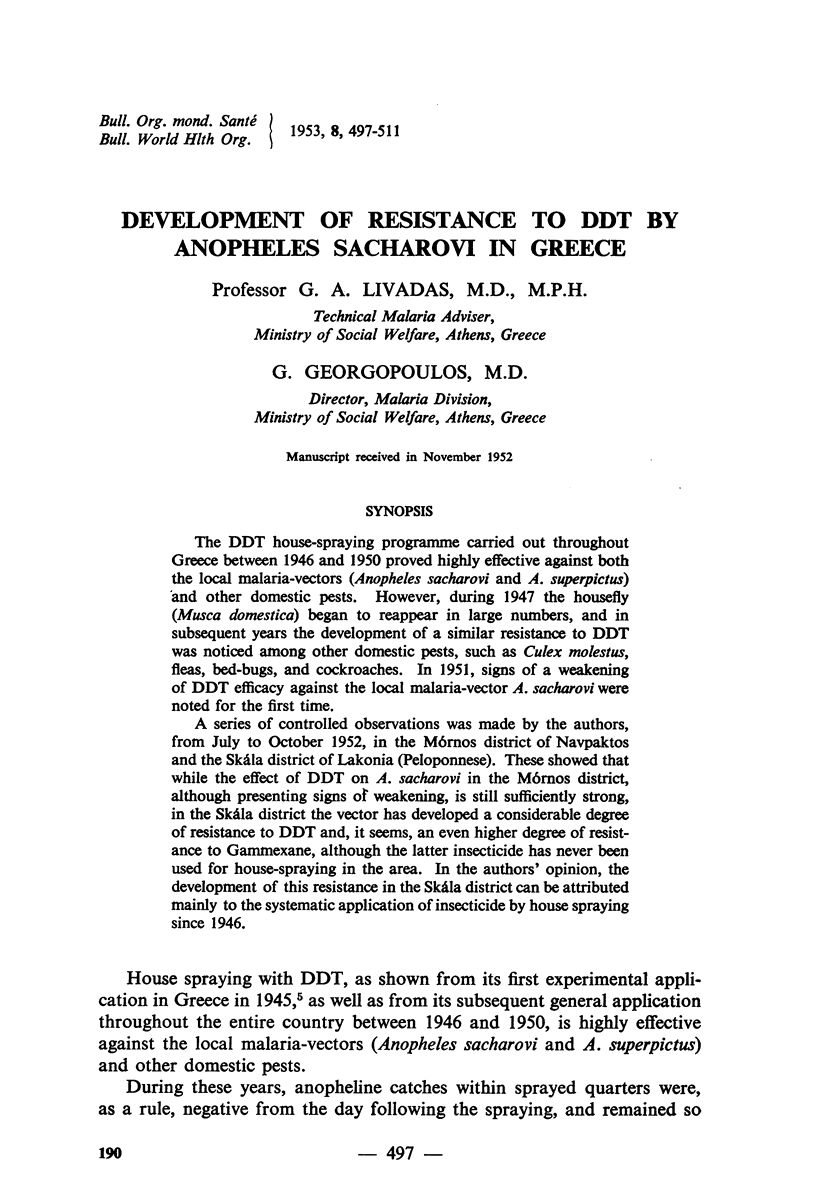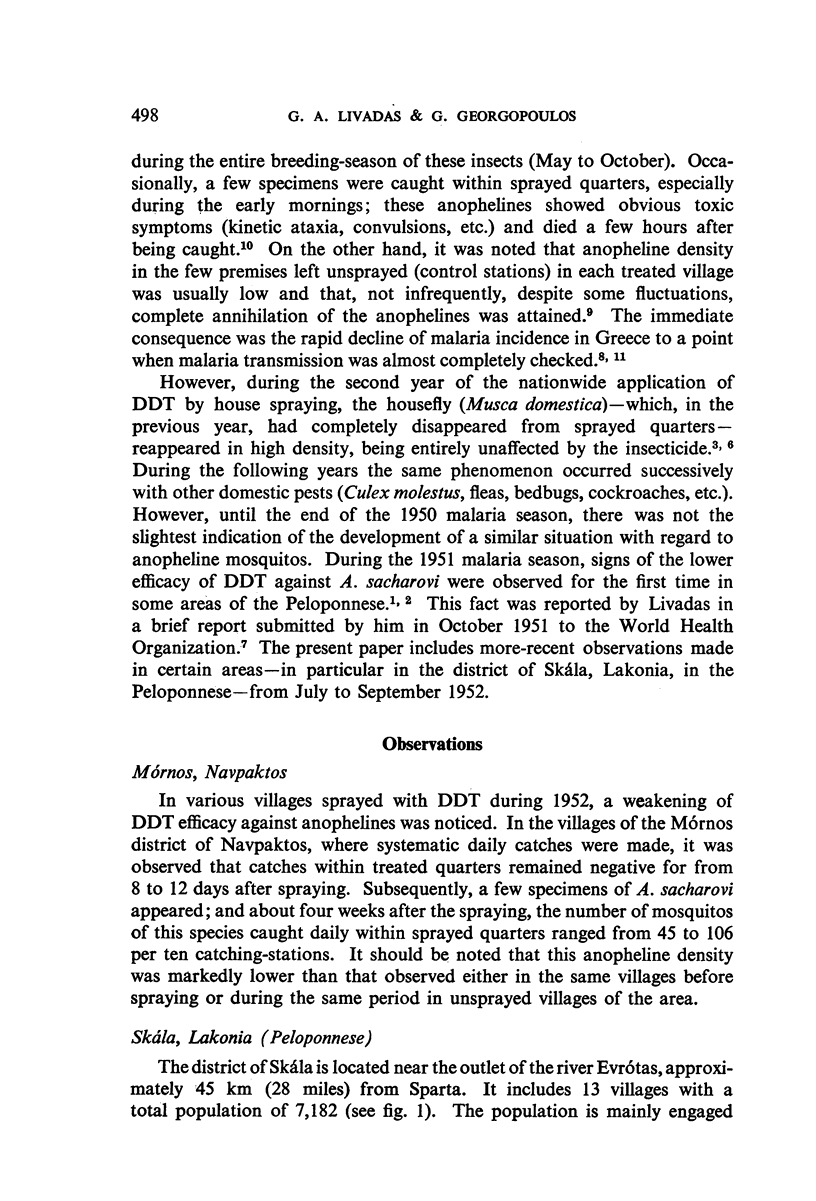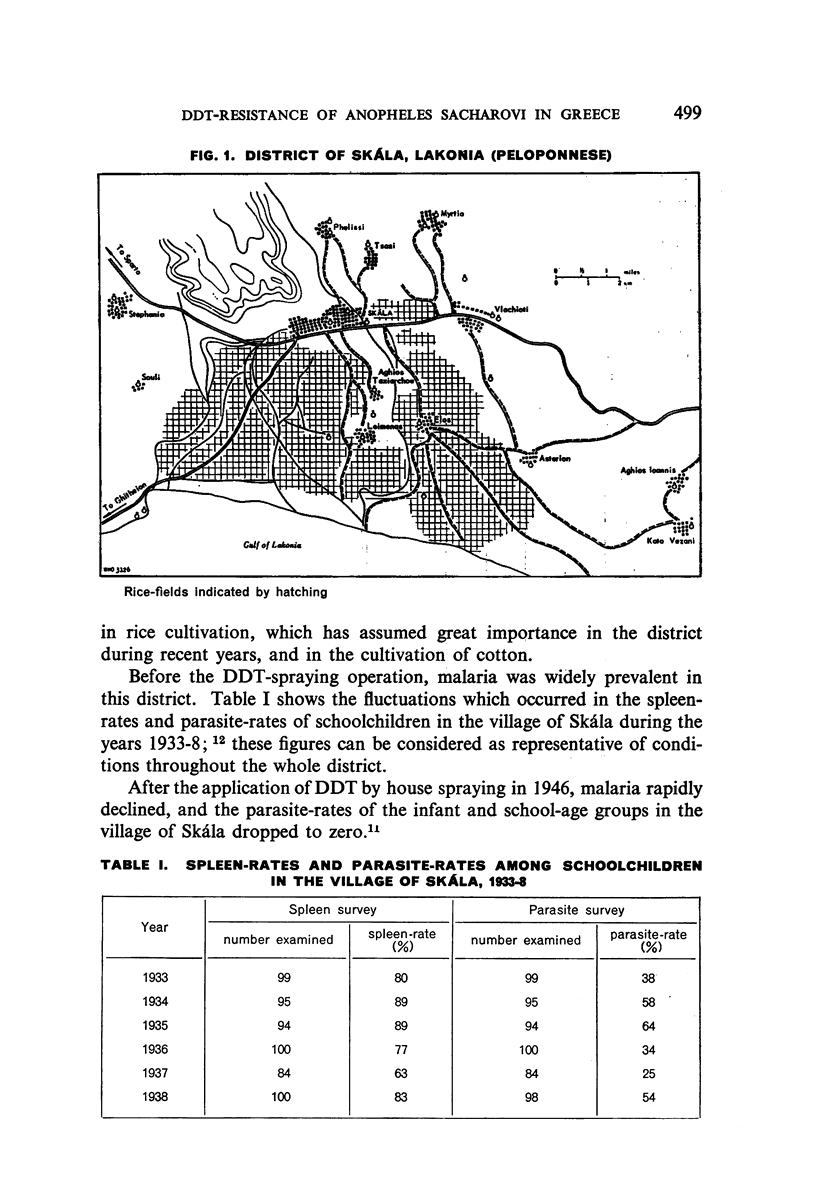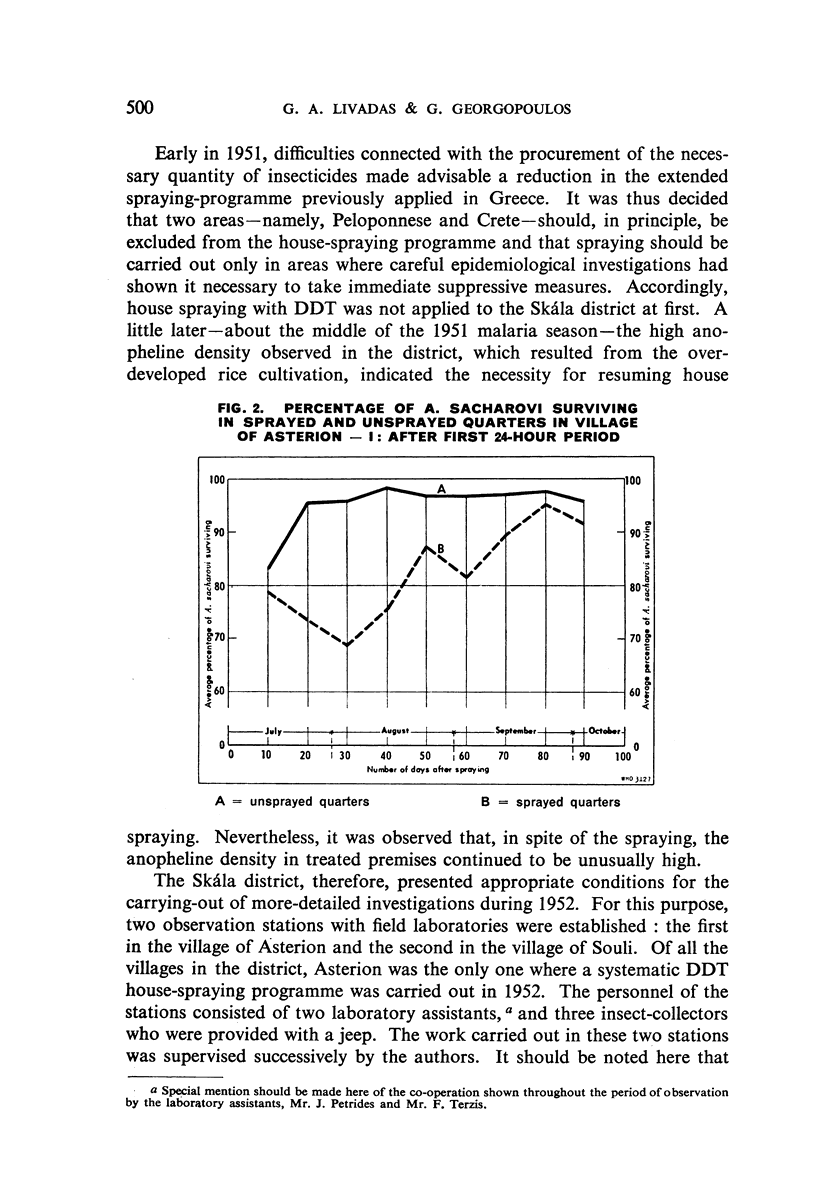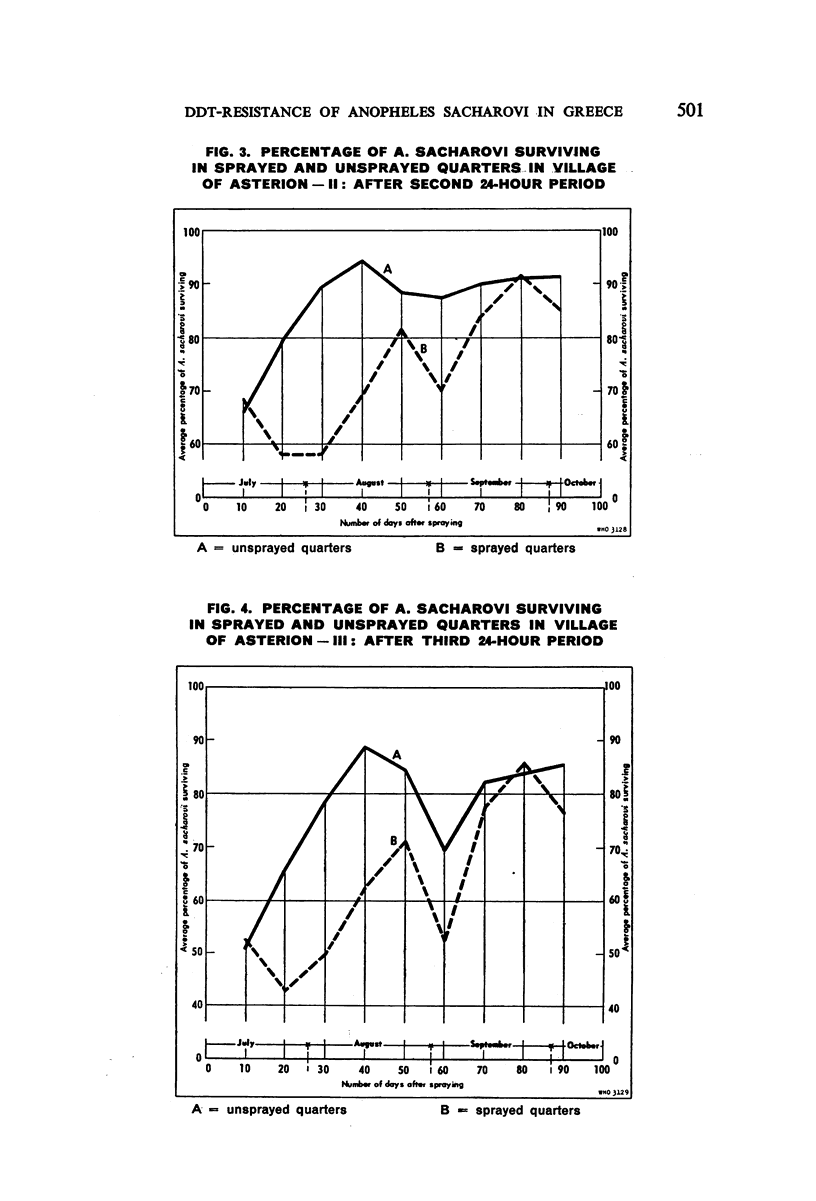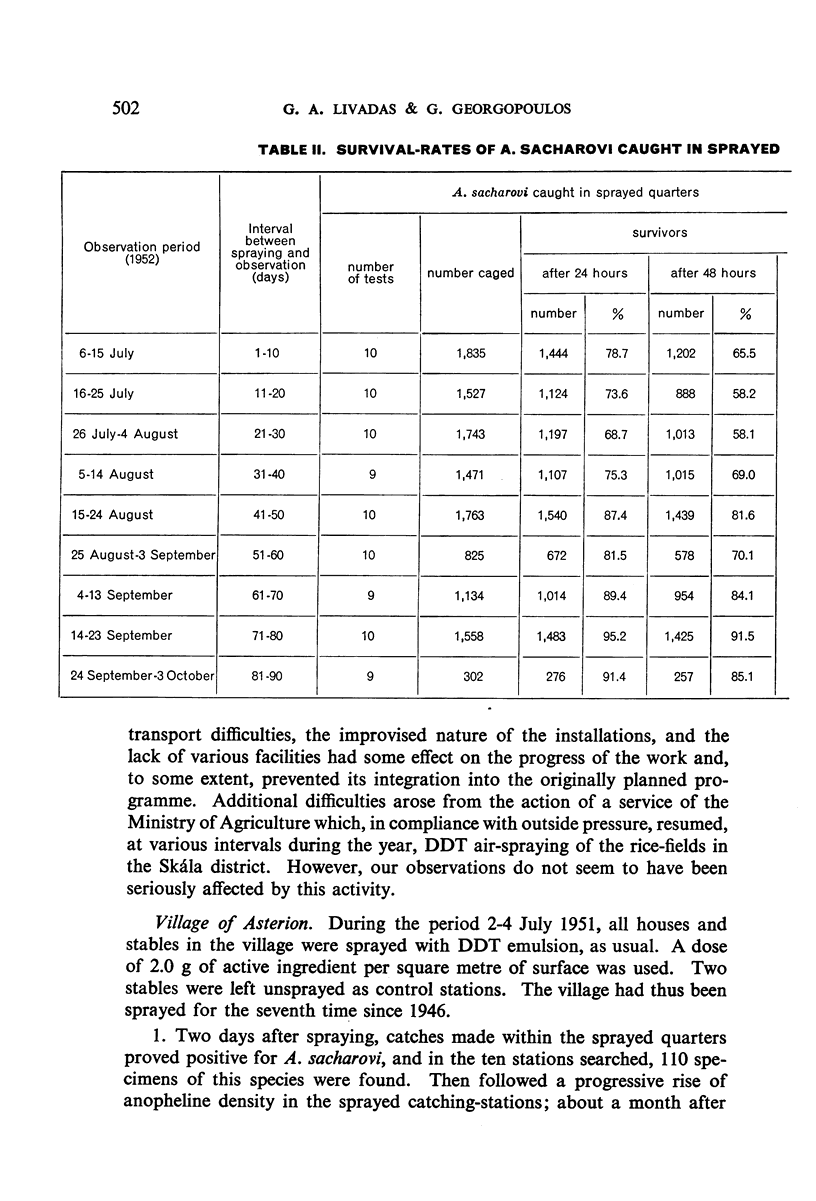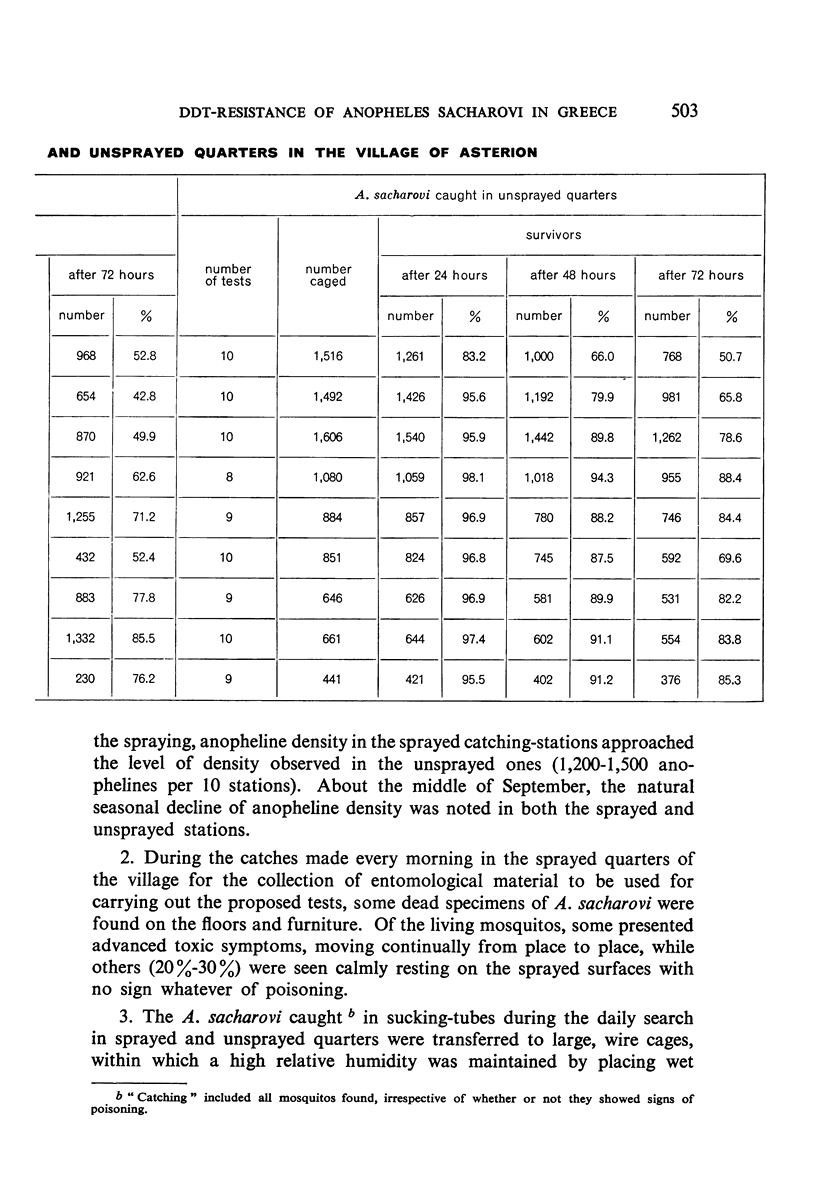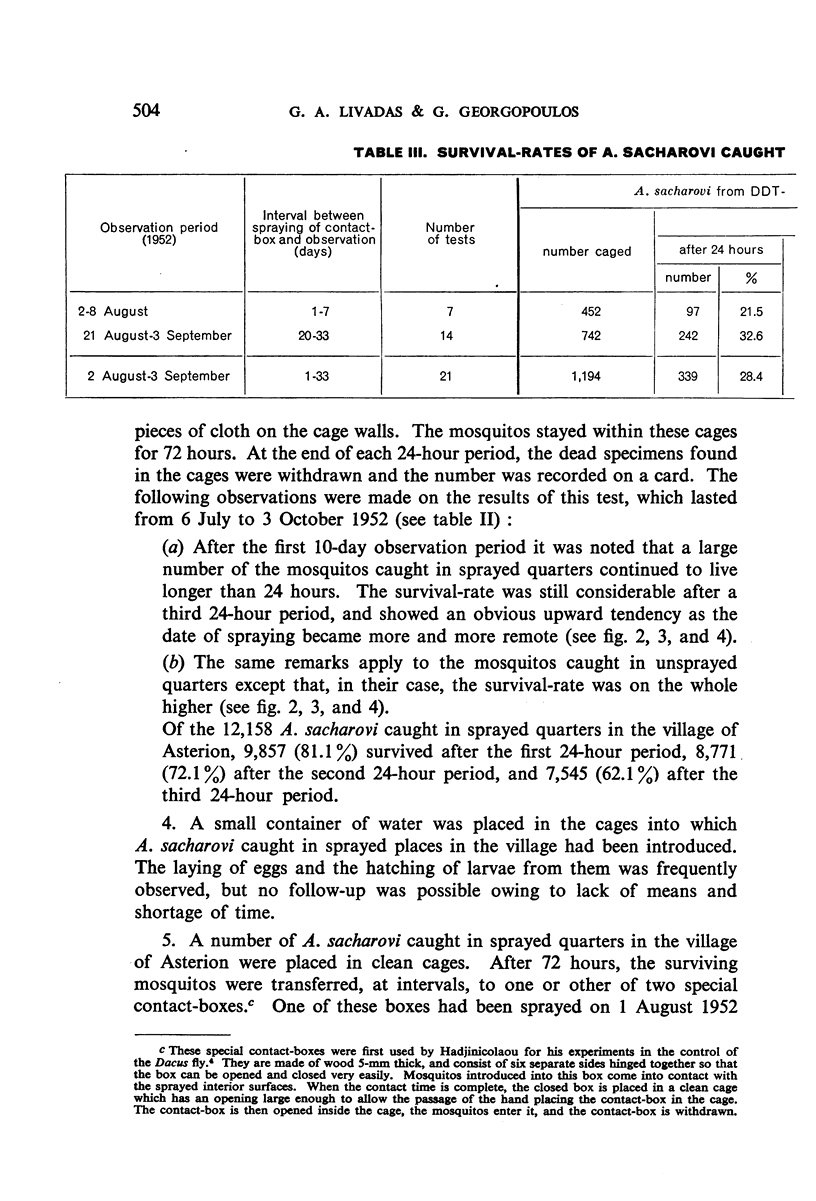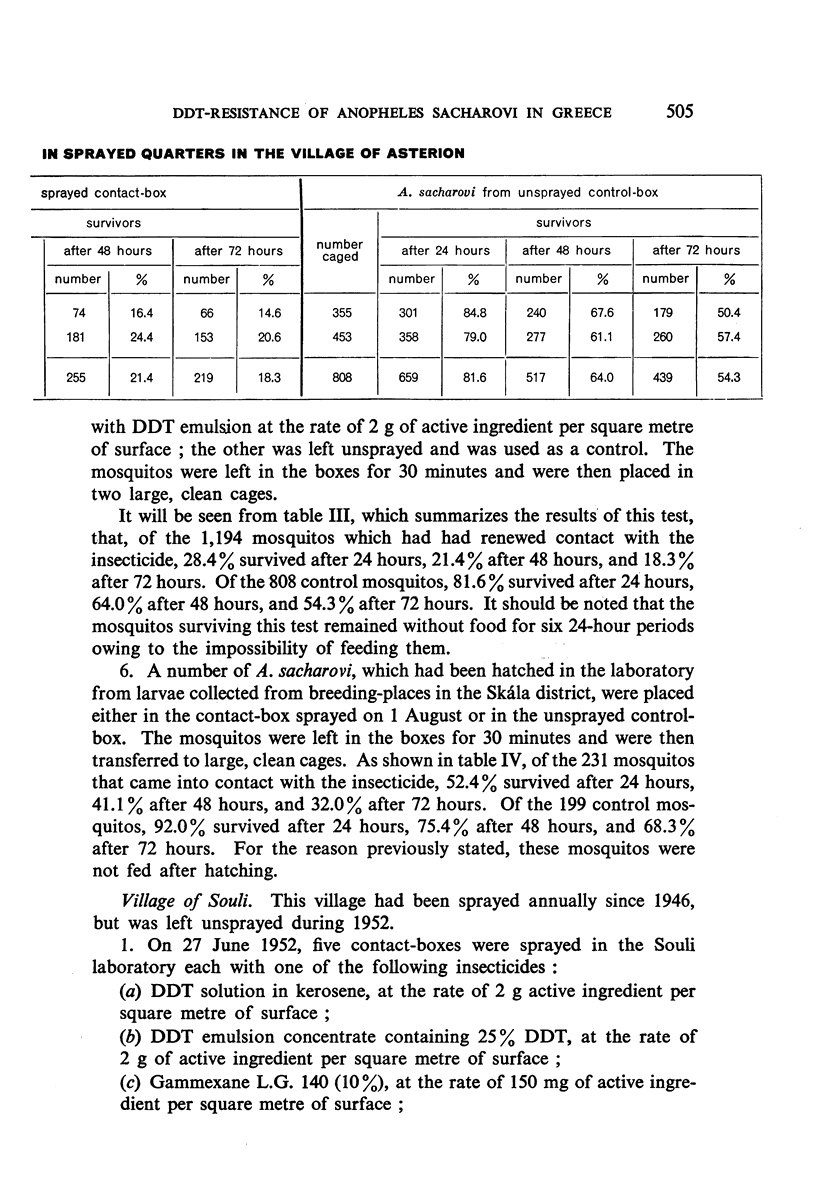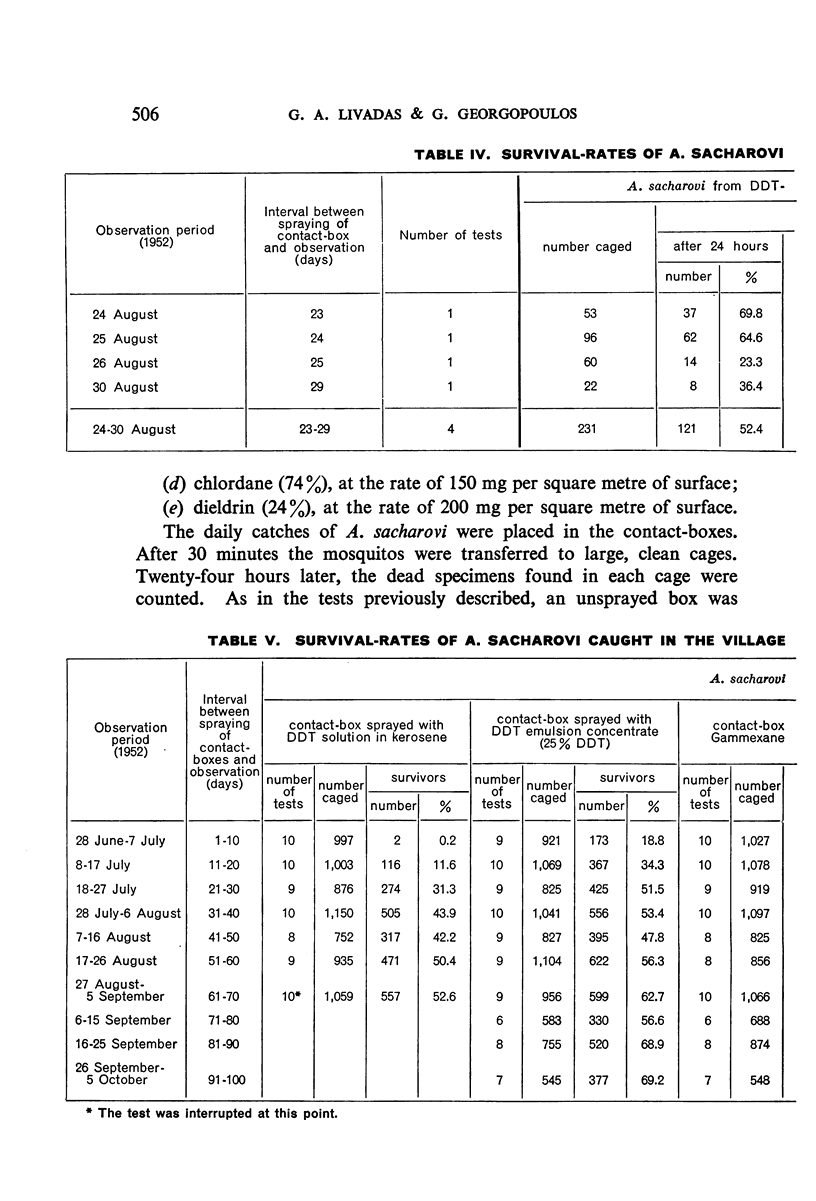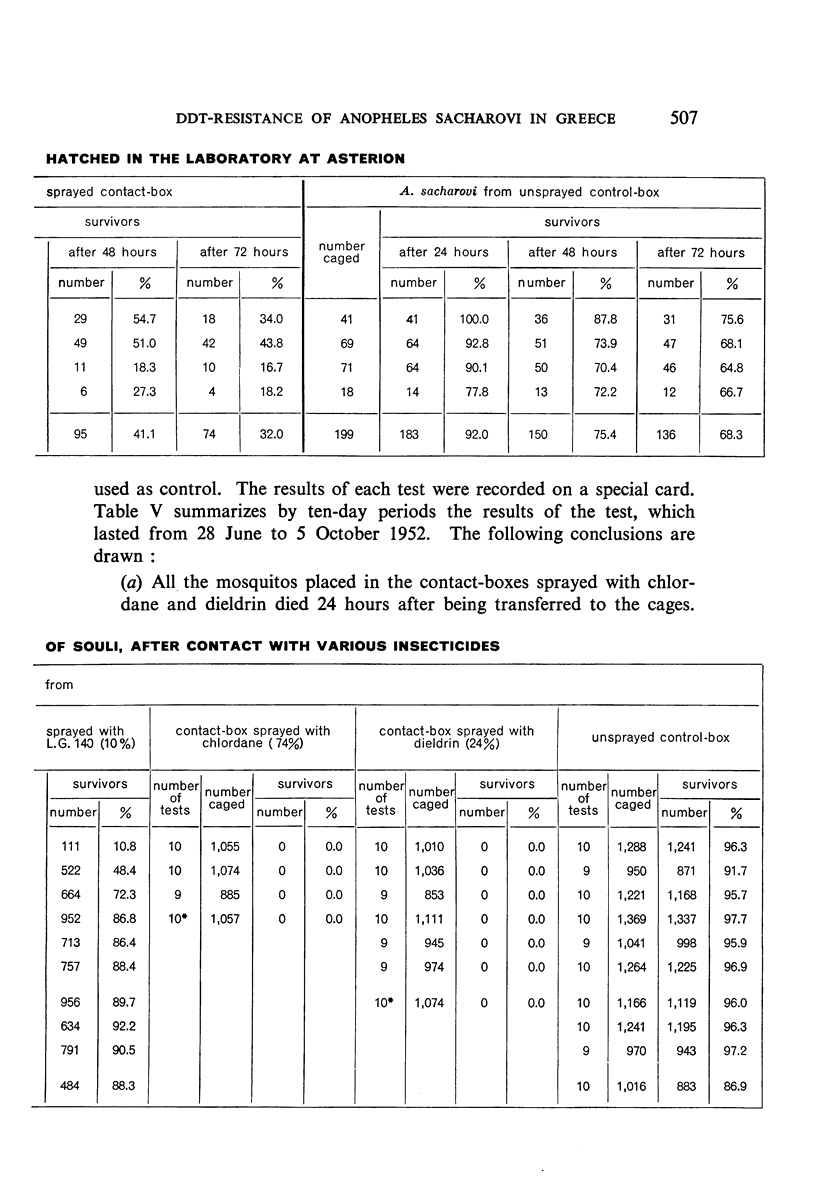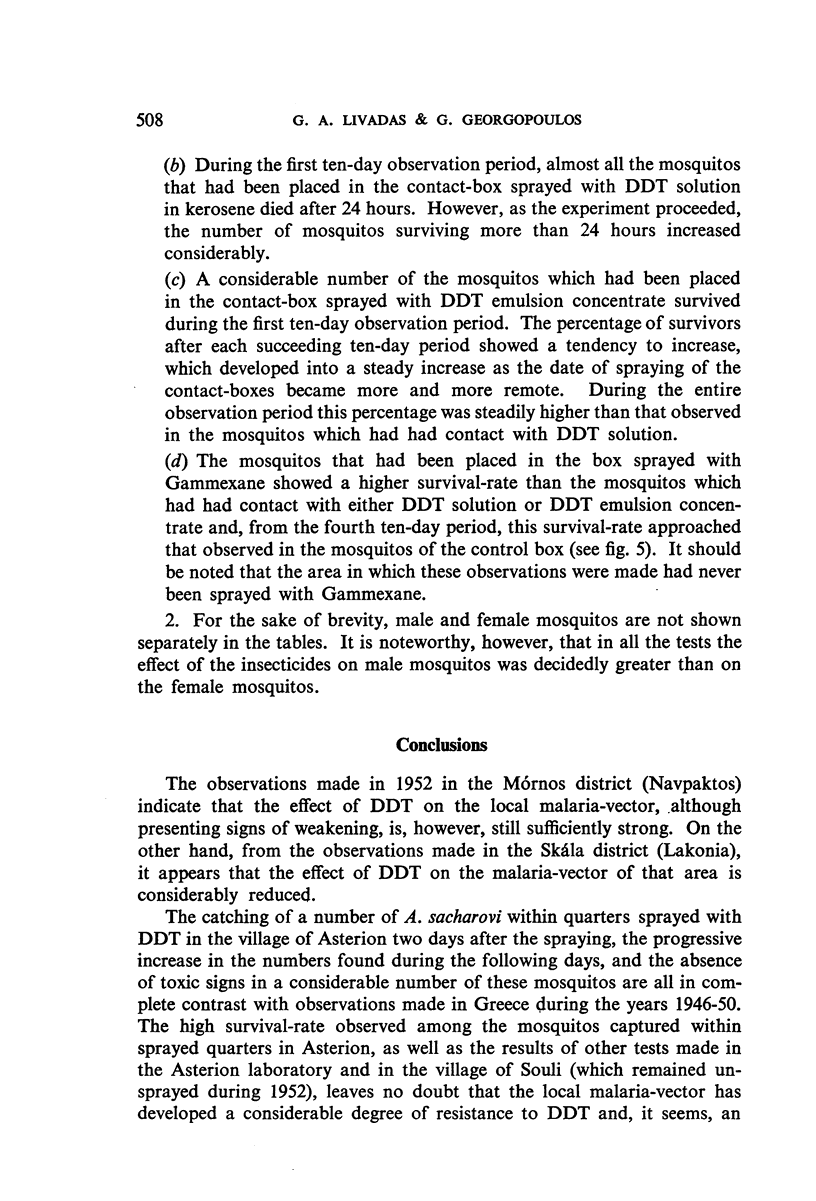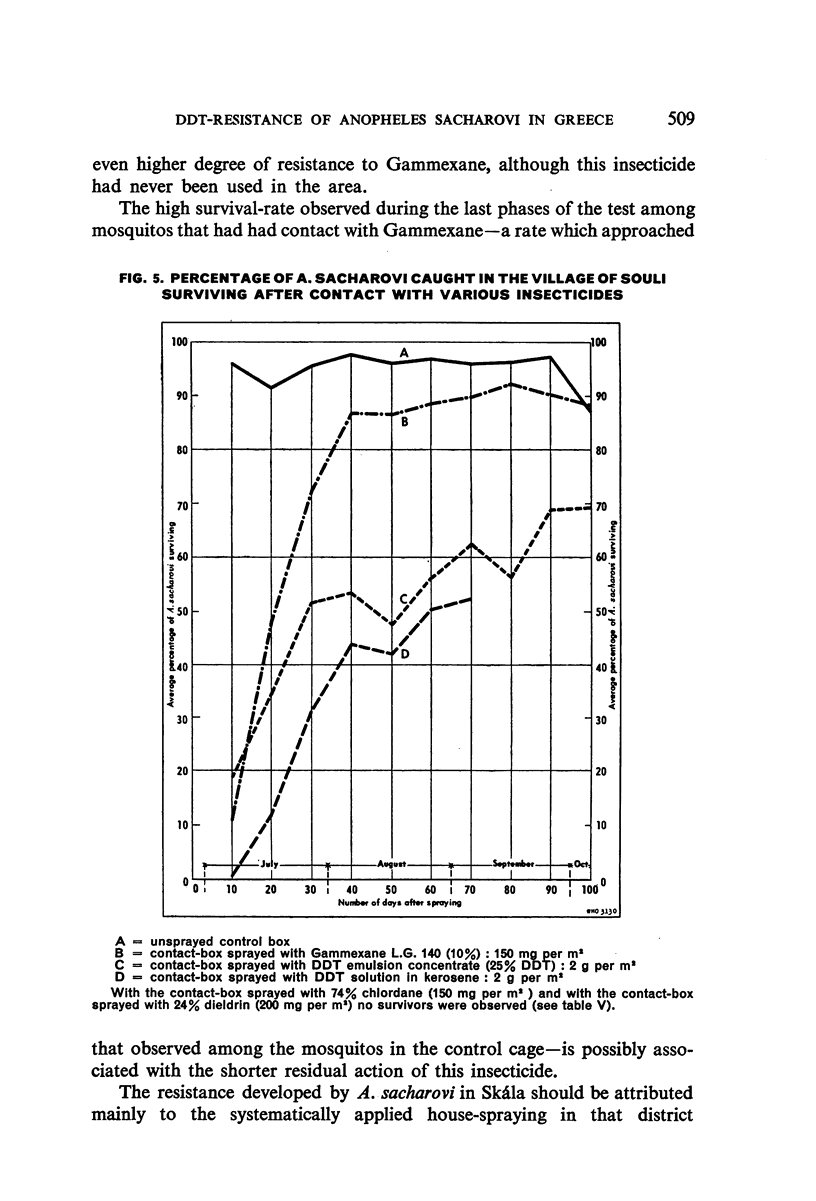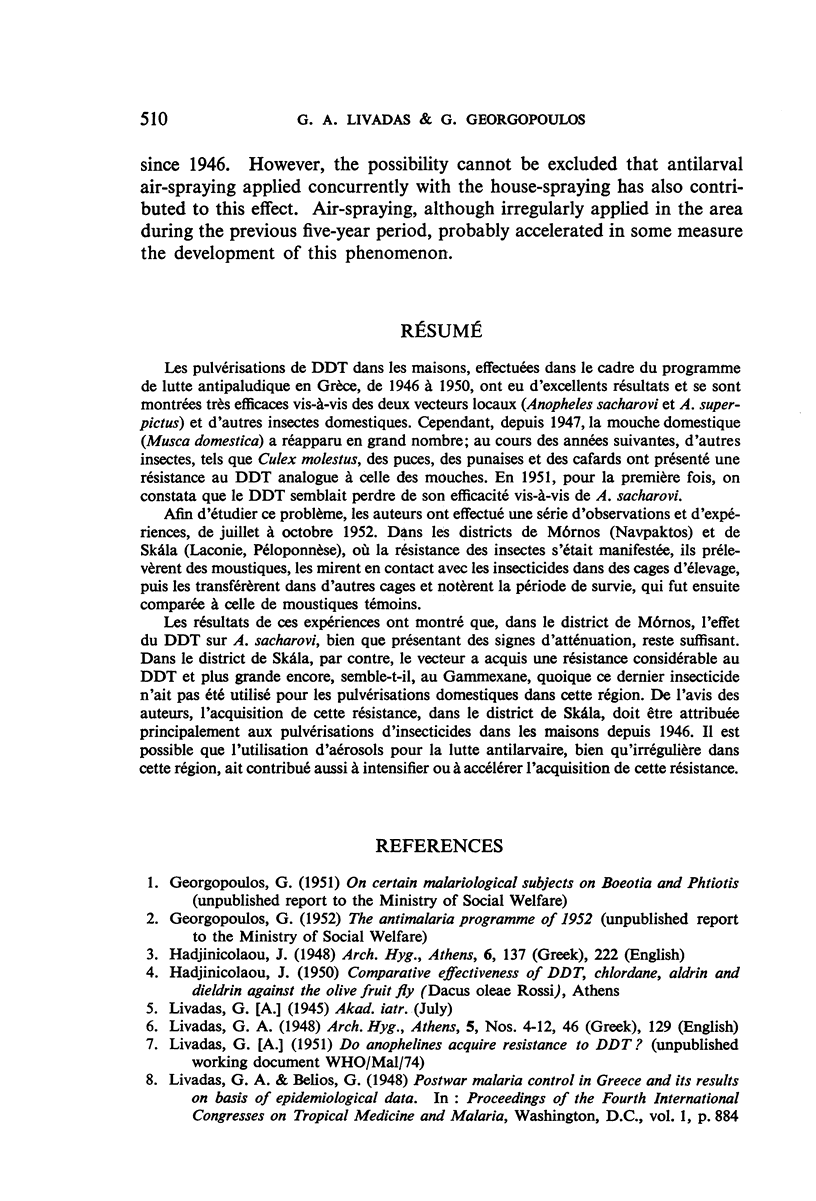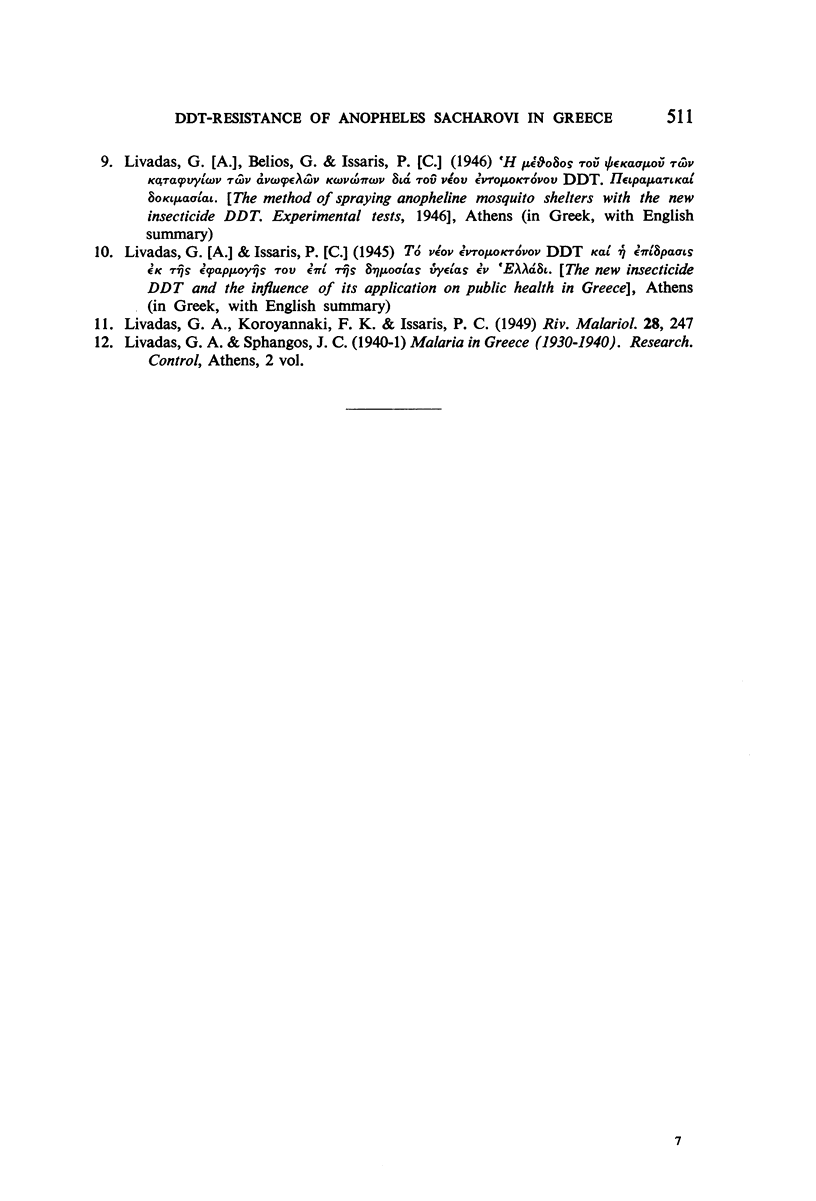Abstract
The DDT house-spraying programme carried out throughout Greece between 1946 and 1950 proved highly effective against both the local malaria-vectors (Anopheles sacharovi and A. superpictus) and other domestic pests. However, during 1947 the housefly (Musca domestica) began to reappear in large numbers, and in subsequent years the development of a similar resistance to DDT was noticed among other domestic pests, such as Culex molestus, fleas, bed-bugs, and cockroaches. In 1951, signs of a weakening of DDT efficacy against the local malaria-vector A. sacharovi were noted for the first time.
A series of controlled observations was made by the authors, from July to October 1952, in the Mórnos district of Navpaktos and the Skála district of Lakonia (Peloponnese). These showed that while the effect of DDT on A. sacharovi in the Mórnos district, although presenting signs of weakening, is still sufficiently strong, in the Skála district the vector has developed a considerable degree of resistance to DDT and, it seems, an even higher degree of resistance to Gammexane, although the latter insecticide has never been used for house-spraying in the area. In the authors' opinion, the development of this resistance in the Skála district can be attributed mainly to the systematic application of insecticide by house spraying since 1946.
Full text
PDF